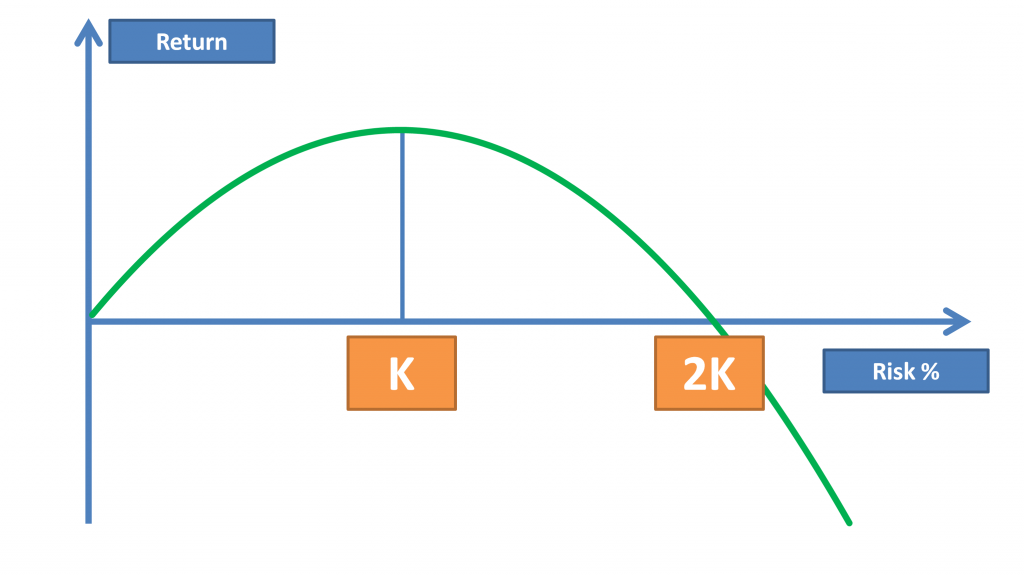Kelly Growth Criterion
The Kelly Criterion is the brilliant summation of a betting strategy first discovered by Information Theorist John Kelly. Kelly came up with a betting system which optimizes bankroll growth based upon known odds and a definite payout. If you can find an exploitable, repeatable edge, Kelly's system tells the maximum you should bet based upon that criteria.
Kelly Criterion Optimal Asset Allocation Calculator
Find many great new & used options and get the best deals for The Kelly Capital Growth Investment Criterion: Theory and Practice by Maclean (2010, Hardcover) at the best online prices at eBay! Free shipping for many products! The main advantage of the Kelly criterion, which maximizes the expected value of the logarithm of wealth period by period, is that it maximizes the limiting exponential growth rate of wealth. The main disadvantage of the Kelly criterion is that its suggested wagers may be very large. Hence, the Kelly criterion can be very risky in the short term.
Here's a calculator which applies the concepts in this post to come up with an allocation:
Using the Kelly Criterion with Your Portfolio

Extending Kelly a bit further (like Ed Thorp, author of two math bibles for the investor/bettor Beat the Dealer and Beat the Market, has done) we can do a bit of hand-waving and make it work for the stock market.

Some derivations of 'Stock Market Kelly' involve using back-looking numbers such beta to approximate the continuous returns of securities. We're going to do it in a discrete way, and use discrete numbers for wins and losses.
The Kelly Criterion For Asset Allocation
Let's say that you're investing with a 10 year time-frame – you want to buy a house or retire, for example. You have an extra $100,000 and are trying to determine the best allocating between stocks and treasury bonds.
%2C445%2C291%2C400%2C400%2Carial%2C12%2C4%2C0%2C0%2C5_SCLZZZZZZZ_.jpg)
Let's try to calculate is your 'edge' and your 'odds'.
It's true: garbage in, garbage out. All we can do is take an educated guess and hope that it is close enough to reality to guide our choices. (See: past performance is no guarantee of future results.)
As they say, history doesn't repeat itself but it often rhymes.
Odds: The S&P 500 beats 10 Year Treasuries roughly 85% of the time over rolling 10 year periods. We'll then enter .85 for our odds of stock out-performance.
Edge: Edge is tough, but for arguments sake, let's use 5%.
Historically 5% is a decent choice; sometimes authors will take average earnings yield and subtract Treasury yield. Change it as you desire.
Using Odds and Edge to Optimize Asset Allocation
'Normal' or 'Full' Kelly is
We need to modify the Kelly Criterion a bit to take into effect the fact that generally a security won't 'go to zero'. (Even a losing 'bet' almost always has some value in the stock market).
We simplify the equation to

Here's the math using the assumptions in the previous section:
So, in this theoretical portfolio with your historic estimate of odds and edge, aim for 79% stocks and 21% bonds. The standard disclaimer applies: these numbers are guesses, so adjust your expectations accordingly.
For traditional Kelly applications, also try the Kelly Calculator for bet sizing.
Review The Kelly Capital Growth Investment Criterion: Theory and Practice
by LEONARD C. MACLEAN, EDWARD O. THORP, WILLIAM T. ZIEMBA
Description
This book contains the definitive treatment of fortune’s formula, also known as the Kelly capital growth criterion. This strategy aims to amplify long-run wealth by maximizing period by the period expected utility with a logarithmic utility function. Generally, the strategy can be risky when used short-term, but when the number of bets is increased, the bettor’s wealth can be bigger in comparison to using other strategies.
This book is encouraged to graduate and postdoctoral students, academics, and researchers. Aside from that, it is also recommended to professional traders interested in betting strategies. With that in mind, the book has many jargons and technical concepts that would need prior knowledge in order to be understood. This book is not for the common readers, though the book already indicates that.
On the good side, this book expounds on the strategy Kelly Criterion as it is applied to investing. The book is divided into six parts and subdivided into chapters, allowing the reader to pick a particular topic they want. Many chapters are discussing various topics, which assures that the Kelly Criterion is discussed here very well.
About the Author
LEONARD C. MACLEAN is Professor Emeritus of Rowe School of Business at Dalhousie University. He has written various publications and has been awarded the Rowe Business School Researcher of the Year Award in 2014. He received his MA and Ph.D. from Dalhousie University.
EDWARD O. THORP is most popular in the finance industry in his book Beat the Dealer, published in 1962. It was the first book to prove that blackjack can be beaten through card counting mathematically. He is regarded as among the best hedge fund managers globally.
Kelly Criterion Formula
WILLIAM T. ZIEMBA is Alumni Professor of Financial Modeling and Stochastic Optimization and Professor Emeritus of the Sauder School of Business at the University of British Columbia from 1968-2004. He earned his Ph.D. from the University of California, Berkeley.
Table of Contents
Kelly Growth Criterion Theory
Preface
List of Contributors
Acknowledgments
Pictures
Part I: The Early Ideas and Contributions
Part II: Classic Papers and Theories
Part III: The Relationship of Kelly Optimization to Asset Allocation
Part IV: Critics and Assessing the Good and Bad Properties of Kelly
Part V: Utility Foundations
Kelly Criterion For Options
Part VI: Evidence of the Use of Kelly Type Strategies by the Great Investors and Others
Bibliography
Author Index
Subject Index